A website structure is among the most important things you have to pay attention to when designing it.
If your website is properly structured, you will enjoy a better user experience and improve your pages’ crawlability and indexability. The whole process of structuring your website can be challenging.
However, there are tools that can simplify the entire process.
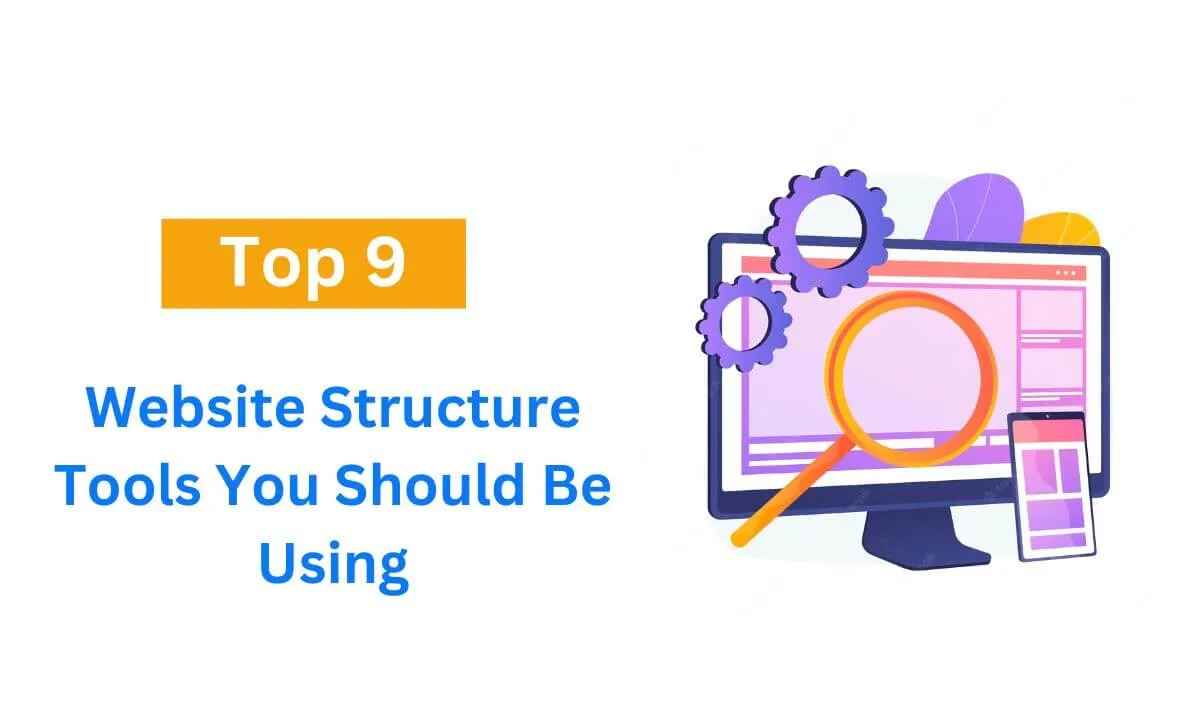
In this blog article, I will explain the top website structure tools you need and how they can positively impact your site.
Why Do You Need a Website Structure Tool?
A website structure tool can offer important details about the layout and framework of your site.
By structuring your website with tools, you can figure out areas in need of optimization and implement changes to better your site performance.
Here are other vital reasons for using a website structure tool:
Better User Experience
A great benefit of using a website structure tool is that it makes your site simpler to navigate, which implies visitors can access whatever they want fast and without hassle.
With website structure tools, you can discover areas of your site in need of optimization, allowing your users to find the content they need.
Improved Visibility on Search Engine
Using web crawlers, search engines access and index a website.
An improved website structure is easier and smooth for search engines to index and crawl, which contribute to higher visibility on search engine.
An Increase in Traffic
When your website is properly structured for both humans and search engines, it can boost traffic to your website.
With a website structure tool, you can detect areas where your website could be optimized, which can attract visitors to your site.
Why is Your Website Structure Important?
Firstly, it is best SEO practice to create a website structure that seeks to improve user experience. It revolves around making the website simple to navigate and identifying relevant content in your link structure.
An improved user experience will result in higher engagement and even conversion. These can also positively impact the rank worthiness of your website.
Internal links assist in showing how much contextual relevance your pages and content have. You can also read how to create a rich on-page SEO and link structure.
For the remainder of this article, we will explore top tools that will improve your site’s link structure and uncover page optimization opportunities.
Top 9 Website Structure Tools You Should be Using
PowerMapper
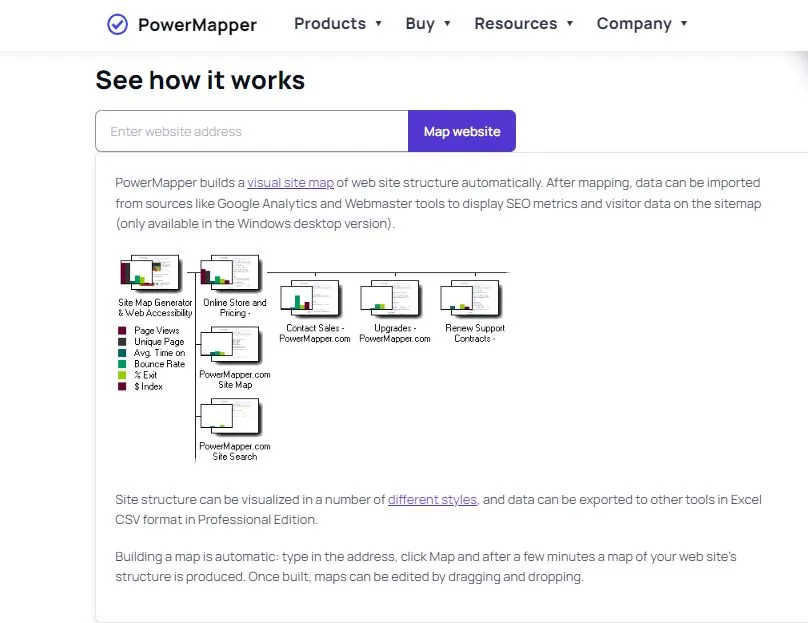
You can use PowerMapper to generate a visual map representing your site architecture automatically.
When this is finalized, you can import sources using tools like Google Analytics to showcase accurate SEO analytics and stats on the sitemap.
There are a variety of styles available to visualize your site structure. Furthermore, you can export data to other tools via CSV format.
Also, generating a map is seamless. All you have to do is input the address, select Map and wait for some minutes for your site structure map to be displayed.
After setting this up, there’s an option to edit via drag and drop.
Screaming Frog

Screaming Frog is a nice option if you would prefer to carry out website structure analysis directly from your PC instead of your internet browser.
Screaming Frog is a website tool that assesses the crawlability of your website and identifies SEO pitfalls that demand your urgent attention. It is built as a lightweight crawler that can be tailored to your needs.
Screaming Frog is effective in identifying a variety of on-page SEO problems like duplicate content, server issues and broken links. It can also detect the indexability of your web pages.
The tool also assists you in evaluating important on-page features that can impact your website visibility on SERPs. These include post length, content titles and meta descriptions.
The tool also has a sitemap generator, which you can easily submit to search engines to assist crawlers in navigating around your website.
SEMrush
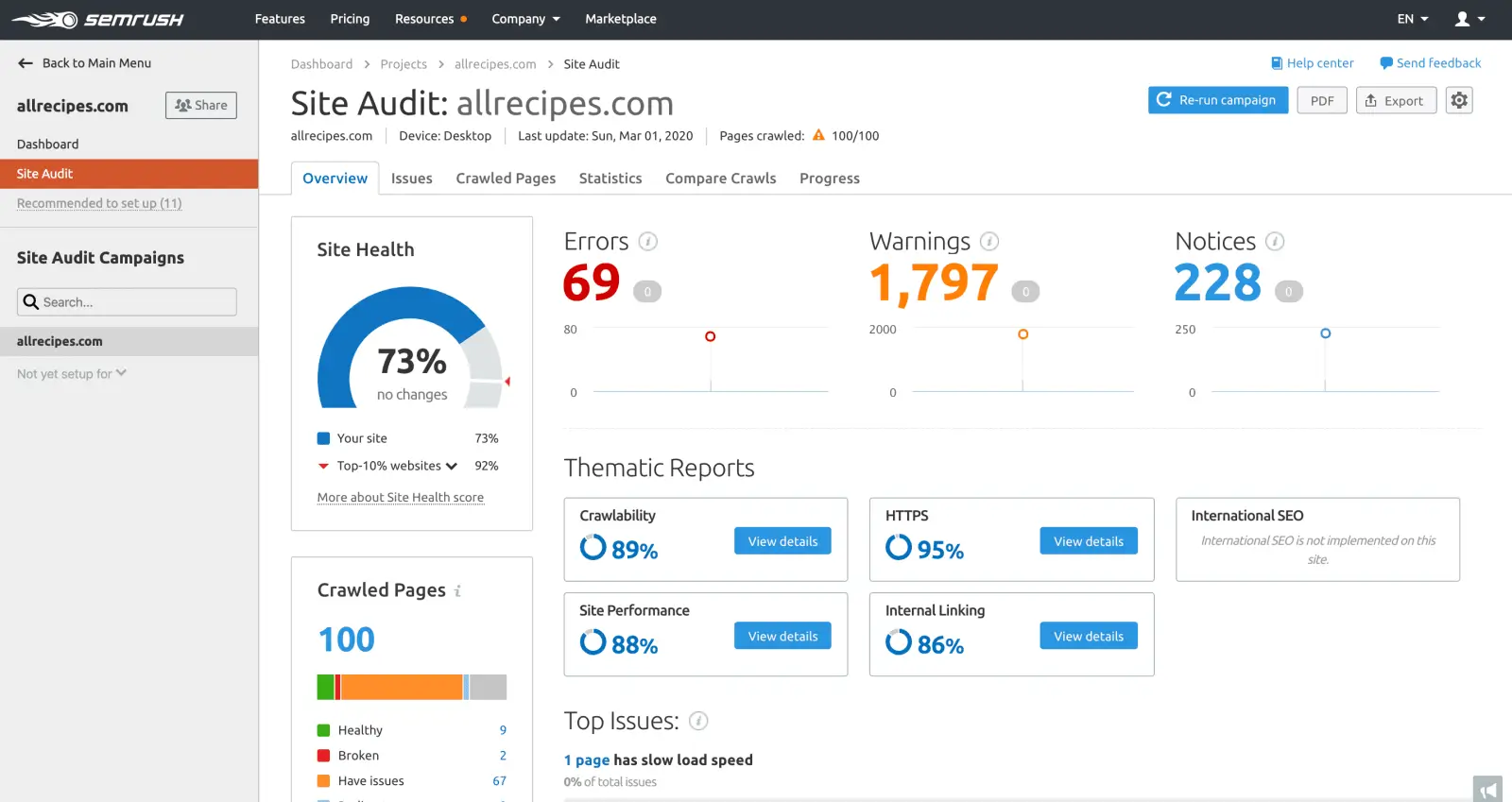
SEMrush goes beyond analyzing website structure. It is a rich SEO platform that can assist you through the entire process of an SEO campaign, whether link building, competitor analysis and site audit.
In relation to site structure, SEMrush’s effectiveness stems from the “Site Audit” option, which enables you to have an in-depth analysis of your site’s internal and external links.
All you have to do is select “Site Audit” from the dashboard and input the site’s URL to start analyzing.
Based on your website size, the time for the audit completion can take any time from some seconds to a couple of minutes.
When finalized, it will redirect to an overview page where you can access your domain’s crawlability, SEI score, performance and many more.
SEMrush will also identify errors, possible issues, warnings and concerns about your website.
Don’t forget that your entire website has to be optimized, not just your site structure alone.
Problems like broken links, orphaned pages, and redirect chains can negatively impact your site’s visibility and have to be rectified immediately.
Similar to Screaming Frog, SEMrush can also identify duplicate pages and other issues that can be problematic for your SERP’s performance.
The tool can also detect technical pitfalls like low word count and lack of meta descriptions.
Creatly
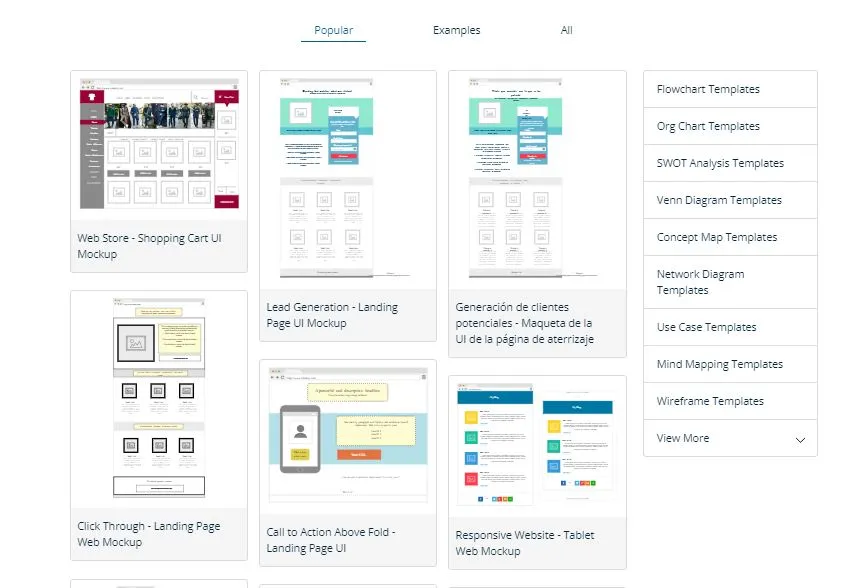
Creatly is a great tool for generating visual sitemaps in an easy and hassle-free way.
It features intelligent visual sitemap generator options like connectors, programming shortcuts and so on.
It is a powerful & user-friendly tool.
The platform has nearly a thousand free, premium website sitemap templates.
Creatly lets you generate visual sitemaps that properly represent your site hierarchy.
Other interesting features include Advanced Sharing Permissions, Markup Support, and Drag drop items from any data source to the canvas.
Lucidchart
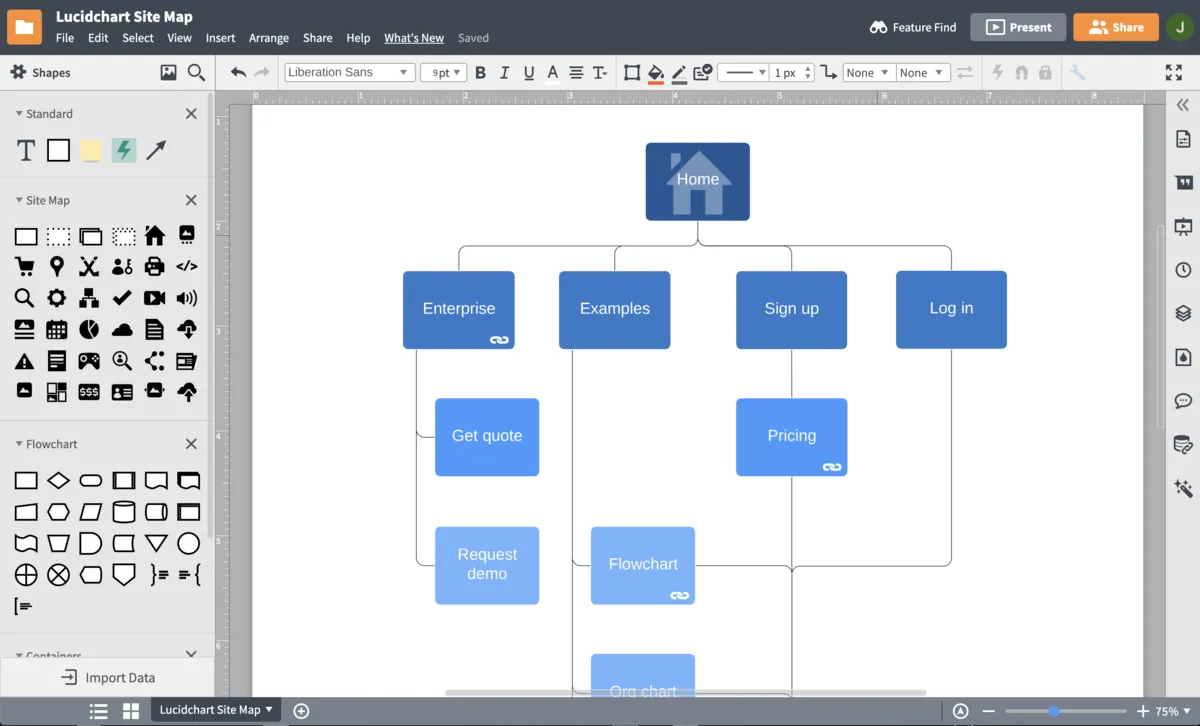
This is an effective tool with a sitemap generator that assists in showcasing the structure element of your site.
It has a visual sitemap that clearly identifies the hierarchy of your page and improves your site navigation.
It has features like a rich template library, Intuitive drag-and-drop functionality and data linking.
Furthermore, you can choose any sitemap template you prefer from a shape library. This template can assist you in illustrating your sitemap schematically.
This tool boasts a simple sitemap creation process that can clearly improve your site performance.
Octopus

Octopus is another excellent tool for your site structure. It can help in generating a visual sitemap.
This should help you build a page hierarchy that your visitors can figure out easily.
With its lo-fi wireframe feature, you can easily visualize your website structure. It also lets you save your site map for offline viewing, etc.
Google Search Console
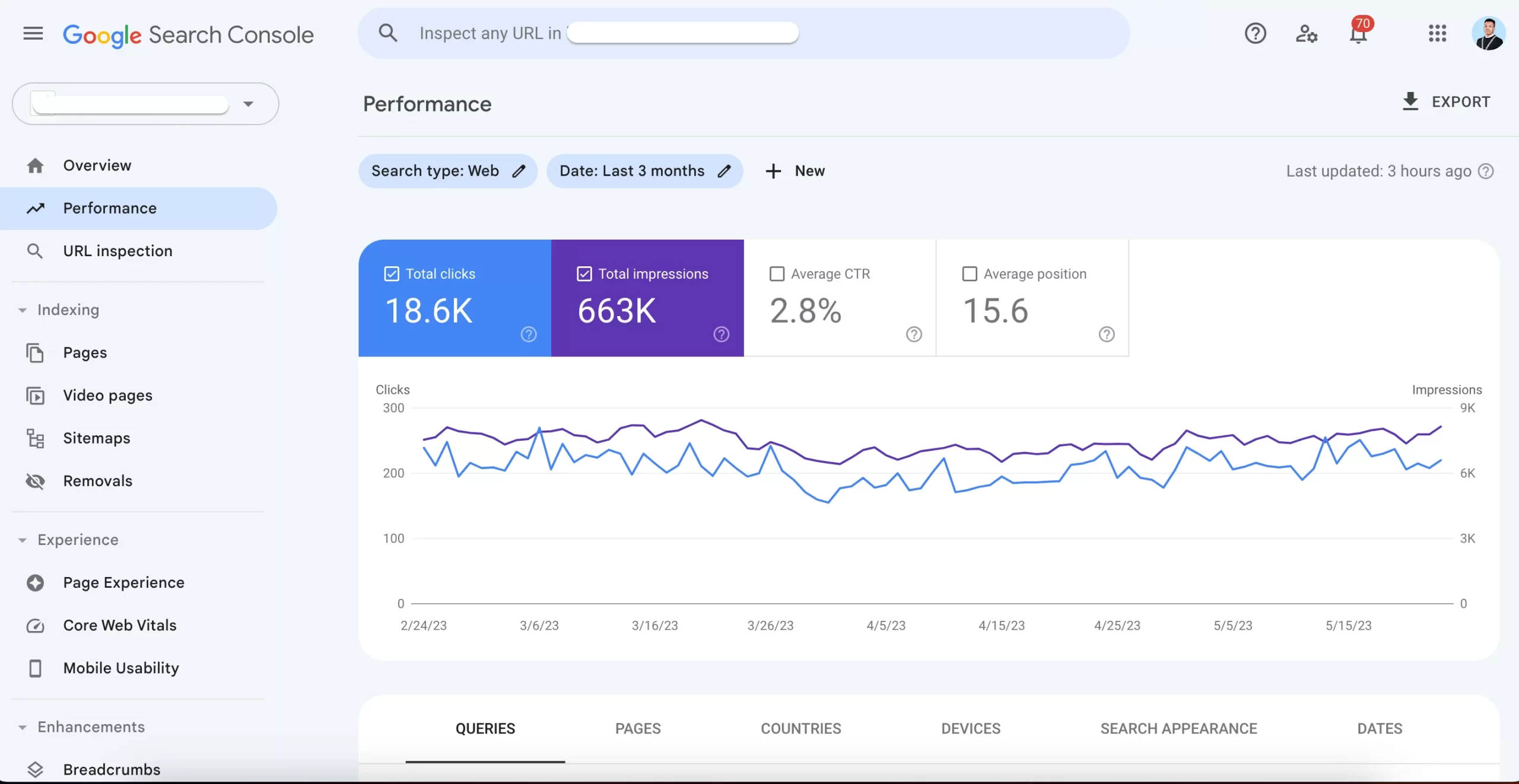
I am sure you are familiar with this tool, as it is among the most important tools for website owners.
Before you can use the tool, you need to authenticate your website ownership by embedding some code into your website.
Next, you can access accurate data that is sourced straight from Google.
One of the essential features of the tool is it allows you to verify if Google has indexed and crawled your page and check the search intents your site has met.
This data is important for your SEO because it shows whether your site has matched the desired keywords for your brand.
Other beneficial features include adding a sitemap to Google and identifying your best-ranked pages and click-through rates.
Siteimprove
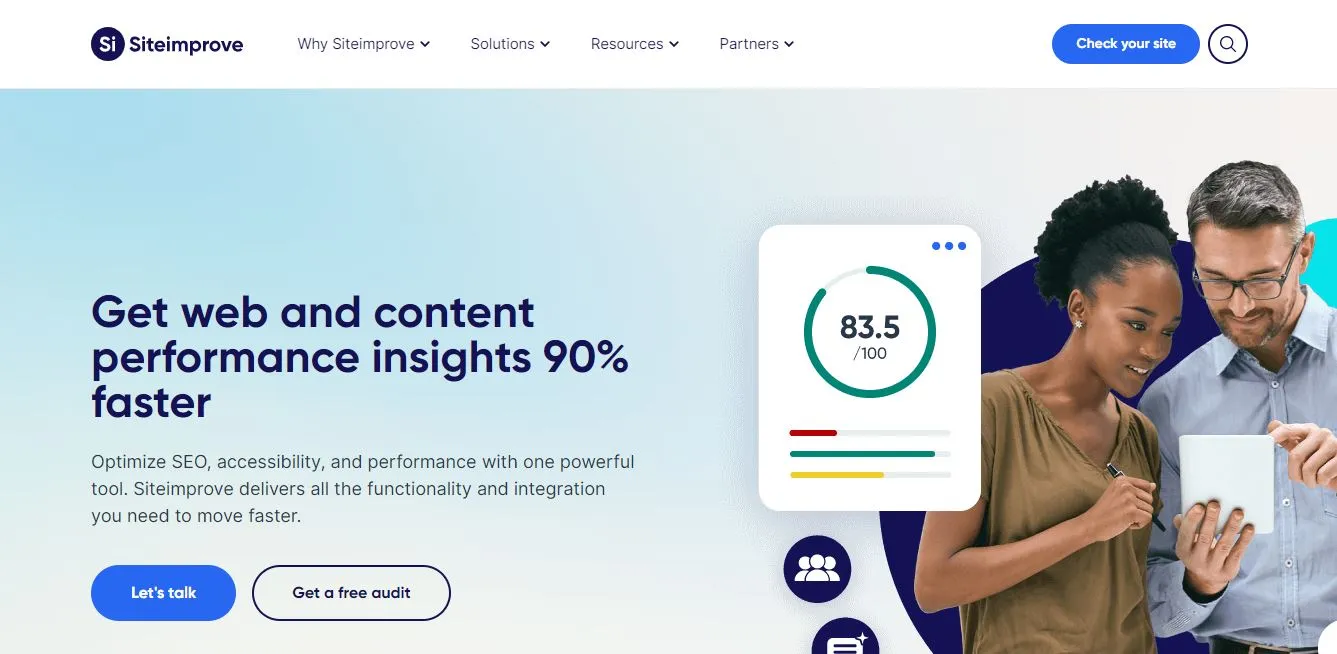
Siteimprove is another SEO tool with a powerful site structure feature. It can assist you in finding problems with your website’s hierarchy.
It can also help you to assess your website’s link structure and offers suggestions to improve your website for search engine crawlers and visitors.
Flowmapp
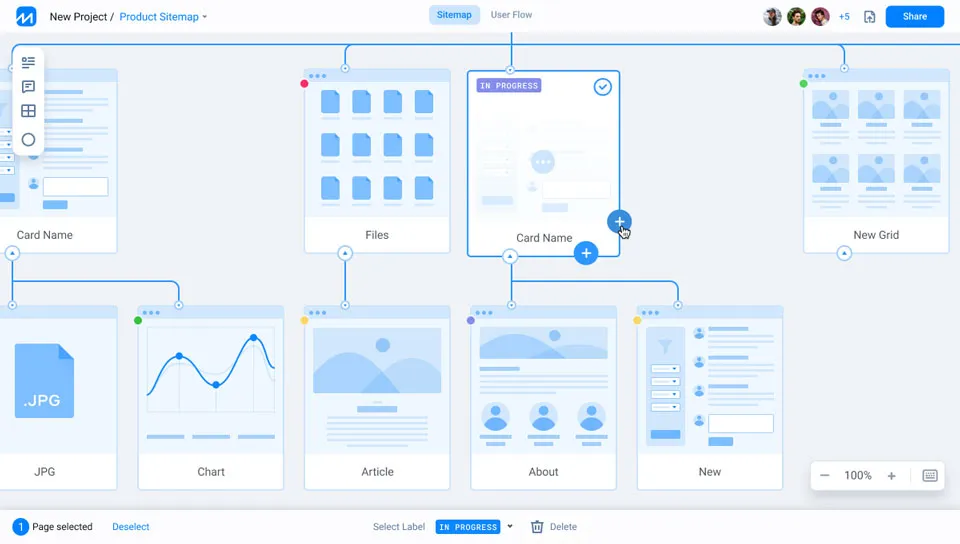
This is a free web platform for generating visual site maps for your web design tasks.
It simplifies site structure development with its site mapping feature.
Flowmapp also has a site builder that you can use easily make changes to your site structure and improve its navigation.
It is an amazing tool that you can use to set up prototypes and strategize content.
This helps you create a creative and appealing site structure.
Website Structure Tools FAQs
Why is a website’s structure important?
A website structure is important since it offers a great user experience.
It is a way of organizing your content and pages in a navigable manner.
Without your website structure, it will be difficult to find your content, and this will frustrate your users.
How does a website’s structure affect SEO?
Your website structure impacts SEO and displays your site’s content and pages in order of priority.
This way, search engines can understand how your site content matches the intent of searchers.
A better website structure will result in a higher rank in SERPs.
How do I organize my site structure?
- Conduct competitor research.
- Ensure you add internal links.
- Generate a sitemap.
- Create a user flow diagram.
Conclusion
Your website structure is very critical when designing your website.
Don’t forget that a badly structured website will perform poorly on SERPs.
Search engine crawlers won’t access or index a website without links to help humans and search engine crawlers navigate your content.
 PrimeGate Digital is a Result Driven Blog that strives to go beyond ‘Conventional Digital Marketing’ through digital innovation and performance marketing. We have experience working with world class brands and products.
PrimeGate Digital is a Result Driven Blog that strives to go beyond ‘Conventional Digital Marketing’ through digital innovation and performance marketing. We have experience working with world class brands and products.
